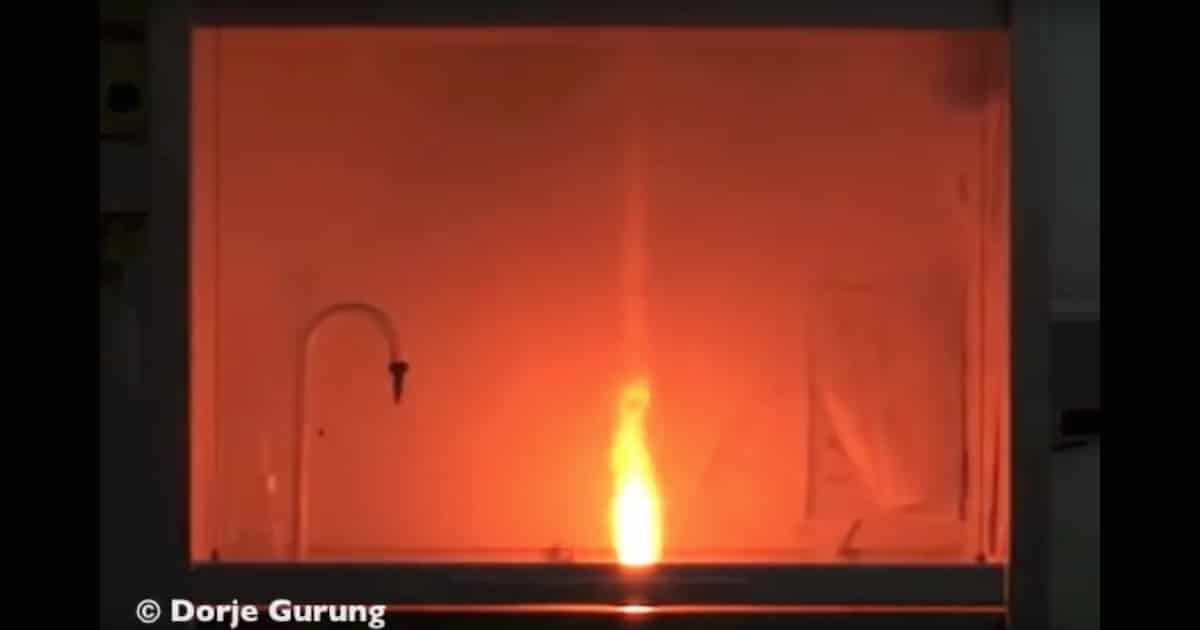This is the second challenge my first year IB Chemistry students in Baku, Azerbaijan engaged in 2009-10.
This challenge involved making gunpowder and studying their rate of reaction.
Here’s a reproduction of parts of the instruction.
* * * * * * * *
Beauties VS. Brawns
Challenge number 2. The Explosive Meet
Name: ________________________ Team: ___________________
Gunpowder is an explosive mixture of carbon, sulfur and potassium nitrate.
The unbalanced chemical equation for the explosive reaction of gunpowder is given below:
KNO3 (s) + C(s) + S(s) ® K2CO3(s) + K2SO4(s) + CO2(g) + N2(g) + Heat
As you can tell, it is quite a busy reaction!
Here is my challenge to you: decide on the optimum mixture of the reactants that will give the highest rate of reaction.
You will not be given an unlimited supply of the ingredients—of course!! (I don’t want you blowing up the school or the parliament building in town!)
Here’s what you will be provided with:
- Maximum total mass of reactants: 5 g
- Small piece of filter paper soaked, in saturated potassium nitrate solution, and dried for use as the fuse
- A crucible (to test the mixture in)
Each team will make 3 mixtures. You will then test the mixtures by igniting it and then compare and evaluate them. How could you compare the rate of reaction of the mixtures? Suggest some ways. (We’ll decide on one that you all agree on.)
Your task:
- Using your esteemed knowledge of stoichiometry and how chemicals in the real world behave, and given the unbalanced equation above, first work out the amounts of each ingredients to be mixed together.
- Test the mixture by igniting it and evaluate. (We will video tape the process.) Determine whether Beauties or Brawns have more brains!
- At the end of this exercise, submit a report (the format of which is detailed at the end of this information sheet). Work through the questions that follow to help you with the write-up.
A word on safety
Gunpowder is a very stable mixture and cannot be ignited by friction or accidental bumps or even electric sparks. It can only be detonated by extreme heat or a naked flame.
However, you must follow the following safety procedures:
| The raw ingredients should be ground separately and only mixed immediately prior to ignition.The gunpowder must not be ignited in asealed container…IT WILL EXPLODE!!!!Never make or store large quantities of powder. |
The Method
- Take each of the three reactants and grind them into very fine powder using a pestle and mortar. If enough pestle and mortar are available, you may use three different pestle and mortar for your reactants. Otherwise, you are going to have to clean the pestle and mortar between reactants. REMEMBER TO KEEP THE INGREDIENTS SEPARATE UNTIL YOU ARE READY TO MIX AND IGNITE.
- Using a digital balance, measure out the masses of the reactants and record them below. A classmate from an opposing team will inspect to see that you are indeed measuring out the amounts indicated above!
- Now you are ready to mix the ingredients in the pestle. Thorough mixing is essential! You may find that the denser carbon tends to settle at the bottom. Try to avoid this!
- Prepare your mixture in the crucible. Your gunpowder is ready for ignition.
- Set if off in the fume cupboard. All you need to do is ignite the fuse with a match.
Report
Write a report containing Aim, Introduction where you give all the background details of how you prepared the gunpowder, why you used the combination of the reactants that you did use (in your past studies of chemistry you may have called this the hypothesis), what data you are going to collect to evaluate your investigation, Observation where you give all the measurements you made, Analysis where you give details of the results of the test and Conclusion and Evaluation where you describe what you and your classmates found, what went well and what went wrong and, if someone else were to repeat the experiment, what they could do to get the highest (or higher) rate of reaction between the three reagents.
* * * * * * * *
Before I let the student loose to prepare the mixture, we discussed the method of determining the rate of reaction and settled on one.
What measurements would you have made and how? How would you have manipulated those measurements to arrive at the rate of reaction?
The following is a video of another class setting off their gunpowder mixture.
What do you suppose my students decided to measure and how? Why would they have decided on those quantities?
The important discovery the students made in this challenge are the following:
- first, how the theoretical ratio of reactants based on the chemical equation is not the ideal ratio in practice;
- second, how a number of considerations must be made in deciding on the optimum ratio in the real world; and
- third, how the optimum ratio depends on the desired result.
In this challenge, three mixtures with the highest rates of reaction were awarded points. One of the Beauties’ mixture had the highest rate, but both the second and third position mixtures were those of the Brawns’!
The Brawns therefore bagged more points!

